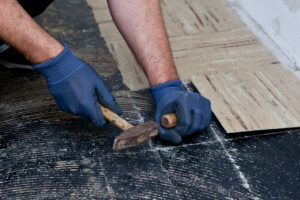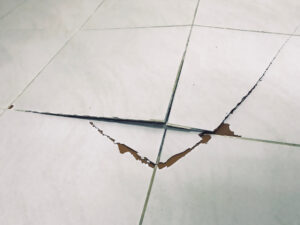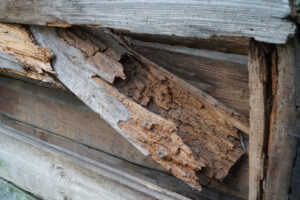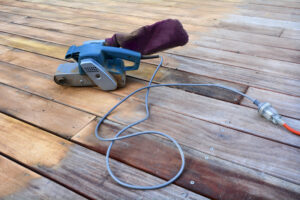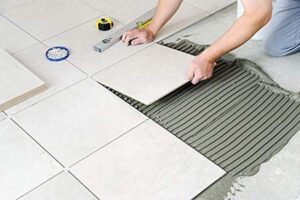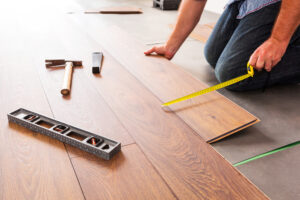In every kind of yard, weeds are a problem. Whether you have a backyard full of grass, flowers, and trees. Or if you have a tiny patio courtyard. Weeds are resilient and will do their best to grow wherever they can. And often, this means growing in between paving slabs.
Removing weeds is often a difficult task. Especially if the weeds are left to grow for a while. (Which is understandable, weeding is not a fun activity). So, here are some tips for getting rid of weeds and how to make them stay gone.
1. Remove the Roots
This is difficult when you’re weeding between paving slabs. If you are working in a flower bed, you would be able to dig deep down into the soil. And remove the weed in its entirety. But this isn’t the case with a heavy patio. Especially if it has been sealed in.
But removing the roots of a weed is the best way to ensure that it doesn’t grow back. If you just pull out the plant itself. Or just snip it so that it cant be seen. Then it will just grow back. So, you need to get rid of the entire plant.
There are a few ways to do this when working around paving slabs. One is to simply lift up the slab. If you are working with paving slabs that haven’t been sealed, then this should be easy. Take up all of the slabs surrounding the weed.
This will help ensure that you get all of those wandering roots. Then, dig the weed out in its entirety. Once you think it has gone, have another dig around. As small bits of root and bulb might still be there. Then replace the slabs.
If you aren’t able to take up the slabs, then you are going to need some special tools. A handheld gardening fork and spade are essential. But small garden shears are also your friend. These can help you get right down between the paving slabs. And grab hold and pull up the root.
2. Seal the Slabs
If the slabs are not sealed, then this might be the time to do it. Especially if they were previously sealed and the concrete has worn away or broken. This will stop the weeds from forcing their way up through the gaps in between.
You might still find a few persistent weeds creeping up around the very edges of the patio. But, generally, this should deter them.
3. Baking Soda
Baking soda can be used for a huge variety of household problems. It is very probably used for cleaning and deterring more than it is used for baking. Baking soda is a natural weed killer and repellent.
When looking at substances that kill weeds, it is important to research how well they stop weeds from growing as well. Not all chemical weedkillers will stop weeds from growing back. They will just kill the plant. And not all of them even get to the root.
Shake some baking soda into the gaps between paving slabs. And then spray the gaps with water. If you can’t reach the gaps or would struggle to kneel down to get to them, shake the baking soda directly onto the paving slab.
Then use a brush to push it into the gaps. This is a good idea even if you can reach down. As it will spread the baking soda out a little more.
4. Salt
Salt is another natural weedkiller and deterrent. Mix together three parts water and one part salt. And then spray the area. Once it has dried, sprinkle some dry salt over the soil as well.
This will cause the weeds to dry up. Water is essential for them, as with any other plant. So adding salt will deprive them of their water retention.
Before adding either salt or baking soda to the soil, it is best to pull up any weeds that have grown through the gaps. This will make it easier to cover the soil with salt or baking soda.
5. Vinegar
Vinegar is very acidic. So it makes a great weedkiller. But don’t just use whatever is in your kitchen cupboard. Make sure to use vinegar with at least 5% acetic acid. Vinegar is best for smaller weeds. It won’t be quite strong enough for bigger weeds.
It is best to use vinegar as an almost last resort. As it is very acidic. And can damage any surrounding plants that it might be sprayed on. It is useful for deterring weeds. But it isn’t the most effective option.
6. Polymeric Sand
Filling the gaps is one of the best ways to stop weeds from sprouting up again. But you can’t just use anything. Polymeric sand is a great option. Polymeric sand is very fine sand. It is poured over the paving slabs. And then brushed into the gaps.
Water is then poured over the sand to saturate it. The sand will dry and become solid, sealing the paving slabs together. It’s important to ensure that all weeds have been removed before applying the sand. But it will make sure that weeds do not come up again until the sand needs replacing.
7. Nothing
Ultimately, even with products such as polymeric sand and chemical deterrents, weeds will always find a way. That is why they are weeds. Because they get in the way and pop up all over the place. There are several ways that you can get rid of weeds. And they can be deterred for a while. But, ultimately, nature will find a way.
There is no one way to stop weeds from growing forever. As they will continue to grow. And paving slabs and the sealants between the slabs will eventually break down and need replacing. So while the options above will give you a reprieve for a while. They will not stop weeds from growing forever.
8. Chemical Treatments
There are a lot of different chemical weedkillers available. Most of which can be found at your local hardware store or even grocery store. But they should be used as an absolute last resort. Chemical weedkillers are incredibly unhealthy.
They also won’t be great for your yard as a whole. Especially if the weeds you are trying to get rid of are near any flower beds or vegetable patches. Chemicals should always be a last resort. Similar to herbicides and pesticides. They are chemicals that are bad for the environment.
Chemical weedkillers will kill the weeds. And some will be able to prevent them from coming up again (for a little while). But this is only because they are so toxic and damaging. They can interfere with local biodiversity and ecosystems. As they will kill more than just the weeds.
Chemical weedkillers can also be poisonous to pets. Especially dogs if they eat anything near the weeds. Or try to eat the weeds themselves. Many might not be fatal for pets. But they can definitely make them ill.
That said, it is possible to find some weedkillers that are more eco-friendly. You might need to dig to find them. But Organic Matters is a good option.
Conclusion
Overall, it is best to dig weeds out in their entirety. If you are able to, lift up the paving slabs and dig up the weeds. Roots and all. If this isn’t an option, dig out as much as you can. Then apply a sealant, such as polymeric sand.
If you don’t want to seal the slabs, then there are lots of natural deterrents available. But it is best to stay away from chemical weedkillers unless you have tried everything else. They are dangerous and toxic chemicals. So are best to be avoided if you can.
Plus, natural methods will likely save you money. As they are much cheaper. And you probably have them in your kitchen cupboards already.
It is pretty much impossible to stop weeds from growing completely. But the options above should give you some respite in between weeding sessions. And will keep your yard looking clean and tidy for longer.
- Drill Battery Maintenance: Essential Tips for Cordless Drill Battery Care - February 5, 2024
- Troubleshooting Drill Issues - February 5, 2024
- Quick Drilling Techniques - February 2, 2024


